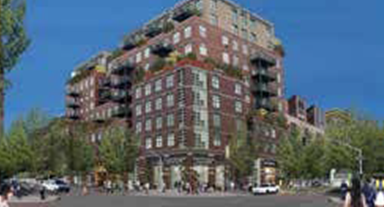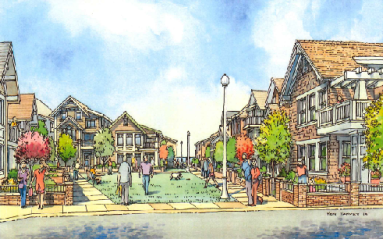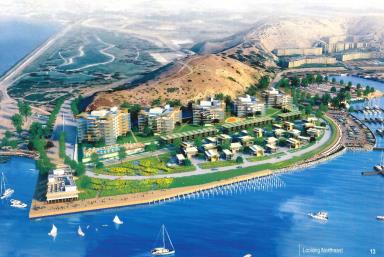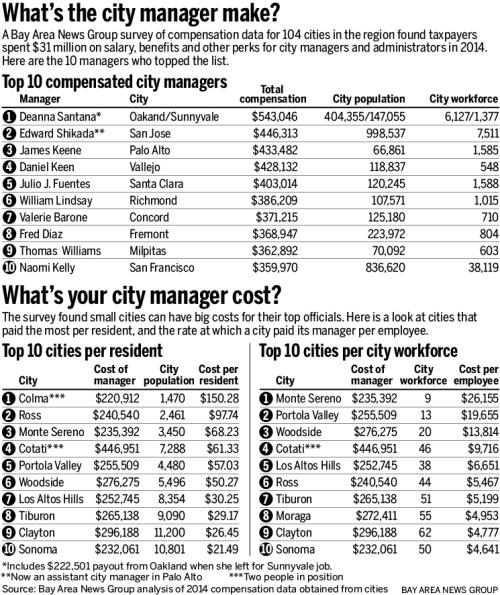| |
With so much attention being focused on the Rent Control and Just Cause Petition, not a word has been written about the other two petitions that were turned in on September 4 for ballot measures.
One is a ballot measure to limit the City Manager’s compensation, and the other is a ballot measure to approve Poe’s Richmond Riviera project. Assuming the signatures are verified, both will go on the November 2016 ballot.
Both were promulgated and signature gathering paid for by Richard Poe, who operates as Virtual Development in Richmond. Poe owns a piece of vacant waterfront property in Marina Bay at the south end of Marina Way, east of and adjacent to the Craneway and the Rosie the Riveter WWII Home Front National Historical Park Visitor Center.
Poe has been planning a project called Richmond Riviera but became upset when it was not greeted with alacrity by the Richmond Planning Department, the Richmond Planning Commission, he Richmond Design Review Board and some City Council members.
Although the Richmond Riviera project has never even been subjected to review by the Planning Commission and Design Review Board, Poe sensed a lack of enthusiasm for the project and decided to try for approval as a ballot measure rather than going through the usual public review process. In a collateral act of revenge and spite directed at the City of Richmond, he also paid for a ballot measure that would limit the compensation to the Richmond City Manager, virtually guaranteeing, if it passes, that Bill Lindsay would look for work elsewhere.
Poe didn’t take this on as a last-minute impulse. He had been engaging in an email and letter writing campaign for over a year directed at Planning Director Richard Mitchel and City Manager Bill Lindsay. In February 2015, he added the owners of the (Ford Building) Craneway to his list of antagonists and basically declared war on the City of Richmond.
He set up a website www.tellthemayor.com, made a public records act request for city employee compensation, sent out a large fold-out, full color mailer entitled “Call the Mayor,” purporting that Richmond is ridden with corruption and mismanagement and that an overpaid City Manager Bill Lindsay’s contract should not be renewed when it expires in 2016. See TellTheMayor.com?
February 8, 2015. City Council members were provided copies of all this as a thinly veiled threat to either get Poe’s project approved or risk losing Bill Lindsay. When Poe didn’t get his way, he began circulation of petitions about a month ago, the same time as the Rent Control/Just Cause referendum petitions started circulation.
Richmond Riviera
The Richmond General Plan 2030 designate Poe’s property as “High-Intensity Mixed-Use (Major Activity Center) with allowable heights up to 135 feet and density up to 125 dwelling unit per acre. Most developers would rejoice at such opportunities. Instead, Poe came up with a bucolic suburban scale project of 12 dwelling units per acre (59 total) and maximum building heights of 34 feet. Planners saw this as a significant underutilization of one of the last remaining pieces of waterfront property.

Above, illustration from General Plan 2030 of the type of development anticipated for Poe’s Richmond Riviera property

Above, illustration of Poe’s plan for Richmond Riviera
One of the core objectives of the General Plan 2030 was to increase density in Richmond along main transportation corridors and around transit centers. The advantages of density are too many to list here, but take a look at Creating Great Neighborhoods, Density in your Community. The Richmond Riviera site would be the closest residential development to the Richmond Ferry Terminal that will go into operation in less than two years, so it qualifies as transit oriented development, and high density development nearby will help make it a success.
The Richmond Riviera site is also adjacent to the Craneway Pavilion, Assemble Restaurant and the Rosie the Riveter WWII Home Front National Historical Park Visitor Center, all of which tend to attract large crowds and activities that sometimes extend into the evening hours. The low-rise, low density project with relatively high purchase prices that Poe proposes would likely attract older buyers and families who would likely find the adjacent activities objectionable, while a denser and larger project would be more attractive to younger buyers and millennials who would likely find the adjacent activities not only tolerable but probably even attractive.
A larger and denser project would also provide higher property taxes to the City of Richmond and support neighborhood amenities such as shops and restaurants. Because of Inclusionary Zoning, a higher density project would either include or generate in-lieu fees of millions of dollars for affordable housing.
It is ironic that for the last three development projects approved in Richmond – Shea Homes, Central Avenue and Nevin – the developers were pushing the limit on height and density while Poe is going the other direction. Before the recession, Toll Brothers was in contract with Poe for the property and had received approval to build a high density project called Spinnaker Gate with 269 units. The other waterfront project now in the review stage is at Terminal 1, and the developers are seeking approval for a 334-unit project that pushes the envelope for height and density.

Spinnaker Gate with 269 units previously proposed by Toll Brothers on the Richmond Riviera site

Proposed Terminal 1 project
We don’t know exactly why Poe wants to put a suburban scale project in this world urban setting, but it probably boils down to money and risk. Poe has owned the property for a long time and therefore has a minimal investment in it. He doesn’t have to make a lot a of profit to cover his investment. A denser project would likely require pile foundations, while the two and three-story buildings in the proposed Richmond Riviera would not. Poe also has a tendency to look back instead of looking forward in his real estate development analyses. The Richmond Riviera is designed to fit a real estate market of 2013, or earlier, rather than the market of 2018 when it would be built, if approved.
Despite the aggressively pro-density General Plan 2030, there remains an active and vocal constituency for low-intensity development in Richmond, including in Marina Bay. Approvals for all three of the projects previously discussed (Shea Homes, Central Avenue and Nevin) were appealed to the City Council, and two of them (Central and Shea) found sympathy with the powerful RPA City Council contingent who deemed them too dense and too high. In 2014, under the pseudonym Richmond Small Business Association, Poe conducted polls on various topics, including density of shoreline housing development, reporting that “72% want lower density” and “28% want higher density.”
Why do some people favor low density no matter what? There are a number of reasons that include:
- There is a perception that higher density residential projects attract undesirable people.
- Some people associate higher density with traffic, parking shortages, noise, crime and other negative impacts.
- Some people are just inherently resistant to any kind of change.
City Manager Compensation
The City manager Compensation ballot measure is an act of pure vindictiveness by Poe. Like low density, there are a lot of people out there who believe public employees are overpaid. As the highest paid City employee (excluding some police and firefighters who collected obscene amounts of overtime last year) the city manager makes a good target.
Poe’s ballot measure would limit the city manager’s total compensation, including benefits, to an arbitrary amount of 5 X the latest median household income for Richmond reported by the U.S. Census bureau, or 5 X $54,589 = 272,945.
Currently, Lindsay’s compensation is $270,522 in salary with a total of $377,391 (according to http://www.mercurynews.com/salaries/bay-area/2012), including benefits, but reported as $411,972 by the City in February of 2015. According to a June 2015 article in the Contra Costa Times, Lindsay is among the best paid city managers in the Bay Area but certainly not at the top. He doesn’t even make the top ten list in either pay per resident or pay per city employee.
Placing an arbitrary cap on the city manager’s compensation has no rational basis, particularly when it is tied to nothing related to the nature of or qualifications for the job. Richmond is the third largest city in Contra Costa County at 108,565, trailing number two Antioch (108,930) by only a few hundred. Antioch has a median household income of 65,264, which, using the same formula would have a compensation cap of $326,264, illustrating how nonsensical such a cap would be.

At the end of the day, city manager compensation packages are negotiated based on multiple factors, including qualifications, complexity and market comparables. Bill Lindsay came to Richmond after the 2004 financial meltdown and has led Richmond on a ten-year run of vastly improving services, improved economic conditions, lower crime and increased quality of life. Richard Poe’s vindictive initiative, if passed, would probably mean the end of Bill Lindsay for Richmond and make it difficult to recruit a top city manager in the future. It’s just plain crazy.
| |

